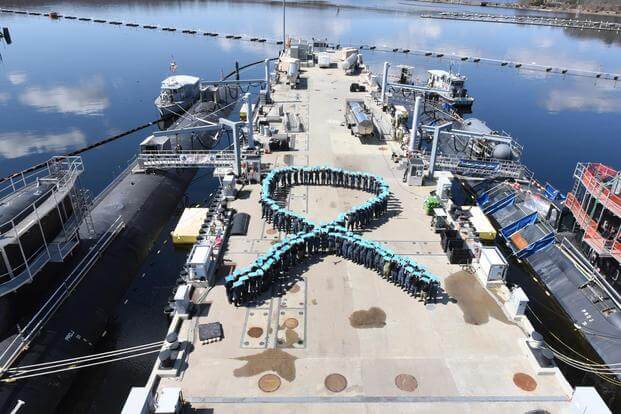Men and women on Navy ships faced the highest rates of sexual assaults in the military, according to newly released data, with as many as one in four male sailors aboard one ship experiencing abuse in 2014.
Navy ships "dominate the highest-risk installations" for sexual assault, according to a long-awaited breakdown of the threat by military installation released Friday by Rand Corp. Overseas installations, large bases and those with a "more prominent combat unit presence" were also reported as high-risk locations, according to the report.
The study, based on data from fiscal 2014, was prepared for the Defense Department's Sexual Assault Prevention and Response Office. It's based on responses from more than 170,000 service members who completed a survey on the military workplace.
While the 118-page study offers a glimpse into the troubling trend of sexual assaults in the military, it also raises several questions about whether the patterns are still relevant.
The collected information is nearly five years old, for example; accounts only for those on active duty; and excludes troops who served less than six months -- along with midshipmen and cadets at the academies. The report also doesn't explain why risks are higher or lower at different installations.
Officials addressed some of those limitations in the report.
"The one-year rates of sexual assault estimated for each installation should be interpreted descriptively, not as evidence that something about the installation or command is causing or preventing sexual assault," the report states. "... The differences may result from differences in command climate, alcohol availability and price, crime rates in the surrounding civilian community, or the transitory presence of one or more sexual predators."
Some of the lowest-risk locations for sexual assault based on the 2014 data include bases in and around Washington, D.C.; small support installations; and medical centers.
Here's a look at how the risks broke down by service
Army
Per the 2014 data, the highest-risk bases identified in the report where women experienced sexual assault included: Fort Huachuca, Arizona; Fort Drum, New York; Okinawa, Japan; and Fort Riley, Kansas.
Men faced higher risks at bases in Italy; Fort Myer, Virginia; Fort Drum, New York; Fort Benning, Georgia; and Rose Barracks, Germany.
Several large and overseas bases were considered high risk for both Army men and women. Men faced higher risks at "installations with a more prominent combat-unit presence."
Several of the bases considered lower-risk were in the National Capital Region, which could be because of the "seniority or profession of soldiers assigned to Washington-area jobs," according to the report.
Marine Corps
As with some of the other services, the bases with the highest concentration of Marines had the highest rates of sexual assault for the Corps.
For female Marines, several air stations, including Yuma in Arizona, Beaufort in South Carolina and New River in North Carolina, were among the highest-risk locations. Marine Corps Ground-Combat Center Twentynine Palms, California, and Okinawa, Japan were also on the high-risk list.
For men, Japan, South Korea, Twentynine Palms and Afghanistan were labeled high-risk, per the 2014 data.
Navy
Ships, or clusters of ships, presented some of the highest risks for both Navy men and women. Of the 15 highest-risk locations for women, 13 were ships. For men, 14 of the 15 riskiest locations were ships.
Some of the ships, including the one where one in four male sailors reported being sexually abused, are not named in order to protect the victims. Several aircraft carriers, including the George Washington, George H.W. Bush, Theodore Roosevelt and Harry S. Truman, were high-risk locations for both genders.
Male and female sailors also reported sexual assault risks in Japan.
Air Force
The Air Force saw some of the lowest rates of sexual assaults, according to the 2014 data in the report. Pilot training bases were listed as high-risk for both genders, however.
Women reported the highest risks at Vance and Altus Air Force Bases in Oklahoma; Laughlin and Goodfellow in Texas; and Columbus in Mississippi.
Altus, Laughlin and Columbus were also rated risky for men, along with Luke Air Force Base in Arizona and Joint Base Anacostia-Bolling in Washington, D.C.
-- Gina Harkins can be reached at gina.harkins@military.com. Follow her on Twitter at @ginaaharkins.











